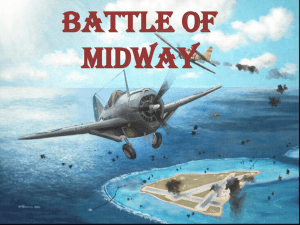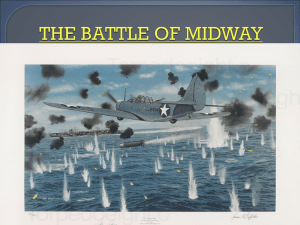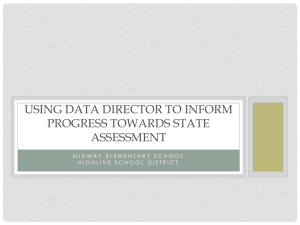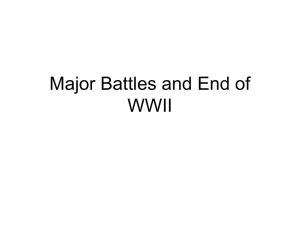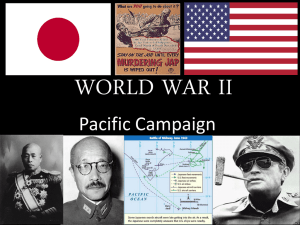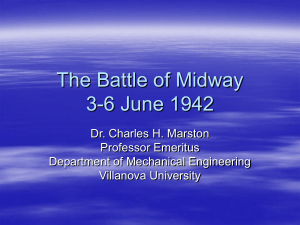Battle of Midway Out of Obscurity
advertisement
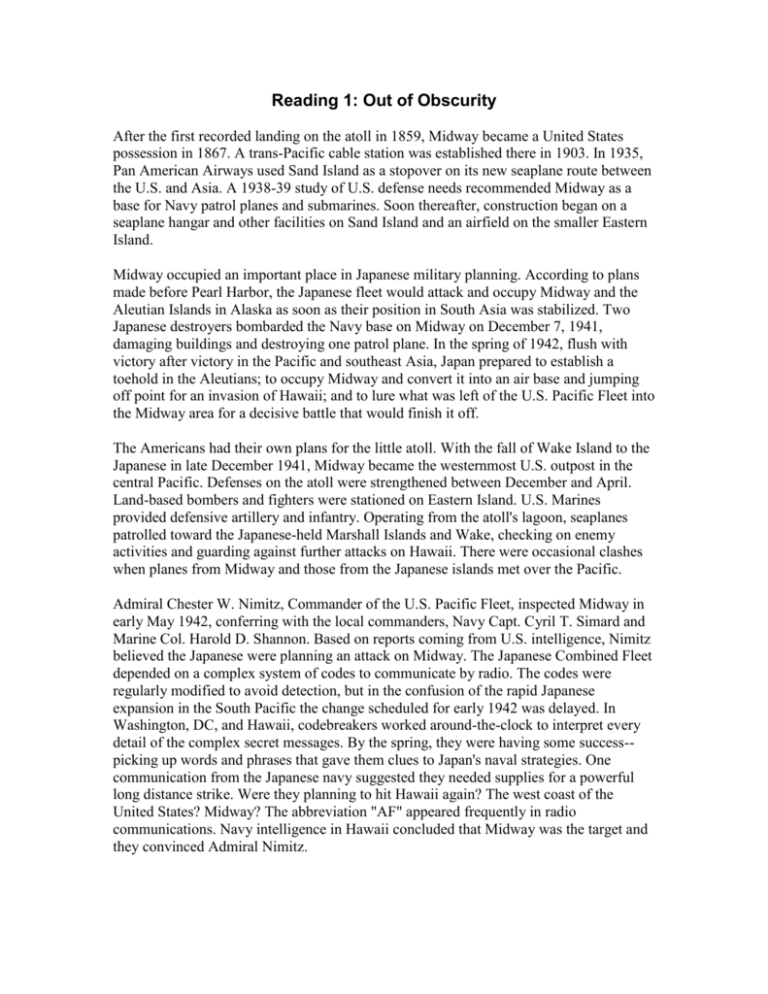
Reading 1: Out of Obscurity After the first recorded landing on the atoll in 1859, Midway became a United States possession in 1867. A trans-Pacific cable station was established there in 1903. In 1935, Pan American Airways used Sand Island as a stopover on its new seaplane route between the U.S. and Asia. A 1938-39 study of U.S. defense needs recommended Midway as a base for Navy patrol planes and submarines. Soon thereafter, construction began on a seaplane hangar and other facilities on Sand Island and an airfield on the smaller Eastern Island. Midway occupied an important place in Japanese military planning. According to plans made before Pearl Harbor, the Japanese fleet would attack and occupy Midway and the Aleutian Islands in Alaska as soon as their position in South Asia was stabilized. Two Japanese destroyers bombarded the Navy base on Midway on December 7, 1941, damaging buildings and destroying one patrol plane. In the spring of 1942, flush with victory after victory in the Pacific and southeast Asia, Japan prepared to establish a toehold in the Aleutians; to occupy Midway and convert it into an air base and jumping off point for an invasion of Hawaii; and to lure what was left of the U.S. Pacific Fleet into the Midway area for a decisive battle that would finish it off. The Americans had their own plans for the little atoll. With the fall of Wake Island to the Japanese in late December 1941, Midway became the westernmost U.S. outpost in the central Pacific. Defenses on the atoll were strengthened between December and April. Land-based bombers and fighters were stationed on Eastern Island. U.S. Marines provided defensive artillery and infantry. Operating from the atoll's lagoon, seaplanes patrolled toward the Japanese-held Marshall Islands and Wake, checking on enemy activities and guarding against further attacks on Hawaii. There were occasional clashes when planes from Midway and those from the Japanese islands met over the Pacific. Admiral Chester W. Nimitz, Commander of the U.S. Pacific Fleet, inspected Midway in early May 1942, conferring with the local commanders, Navy Capt. Cyril T. Simard and Marine Col. Harold D. Shannon. Based on reports coming from U.S. intelligence, Nimitz believed the Japanese were planning an attack on Midway. The Japanese Combined Fleet depended on a complex system of codes to communicate by radio. The codes were regularly modified to avoid detection, but in the confusion of the rapid Japanese expansion in the South Pacific the change scheduled for early 1942 was delayed. In Washington, DC, and Hawaii, codebreakers worked around-the-clock to interpret every detail of the complex secret messages. By the spring, they were having some success-picking up words and phrases that gave them clues to Japan's naval strategies. One communication from the Japanese navy suggested they needed supplies for a powerful long distance strike. Were they planning to hit Hawaii again? The west coast of the United States? Midway? The abbreviation "AF" appeared frequently in radio communications. Navy intelligence in Hawaii concluded that Midway was the target and they convinced Admiral Nimitz. Top Naval officers in Washington were not so sure. They could not believe that the Japanese would send a huge fleet to take a little atoll. It would be like fishing for minnows with a harpoon.¹ Lt. Comm. Jasper Homes came up with a brilliant idea. Knowing that Midway depended on desalinated water, he used the old undersea cable to send a message to the military there. He asked them to send out an uncoded radio message stating that the purification system had broken down: "We have only enough water for two weeks. Please supply us immediately."² A few days later, the code breakers picked up a Japanese message saying that AF had water problems. That made it certain. They now knew that the Japanese would send a small force to the Aleutian Islands, as originally planned, but that the main target would be Midway. Nimitz asked Simard and Shannon what they needed to protect the islands. They reeled off a long list. He asked Shannon: "If I get you all these things you say you need, then can you hold Midway against a major amphibious assault?" The reply was a simple "Yes, sir."³ Within a week anti-aircraft guns, rifles, and other war materiel arrived at Midway. Eastern Island was crowded with Marine Corps, Navy, and Army Air Force planes-fighters, small dive bombers, and larger B-17 and B-26 bombers. Every piece of land bristled with barbed wire entanglements and guns, the beaches and waters were studded with mines. Eleven torpedo boats were ready to circle the reefs, patrol the lagoon, pick up ditched airmen, and assist ground forces with anti-aircraft fire. Nineteen submarines guarded the approaches from 100 to 200 miles northwest and north. By June 4, 1942, Midway was as ready as possible to face the oncoming Japanese. Questions for Reading 1 1. What did the Japanese hope to accomplish by occupying Midway? 2. What actions did the Americans take to protect the islands? 3. How did the Navy determine that Midway was the target for the Japanese fleet? 4. Why was it difficult to convince people in Washington that the information provided by the code breakers was correct?

